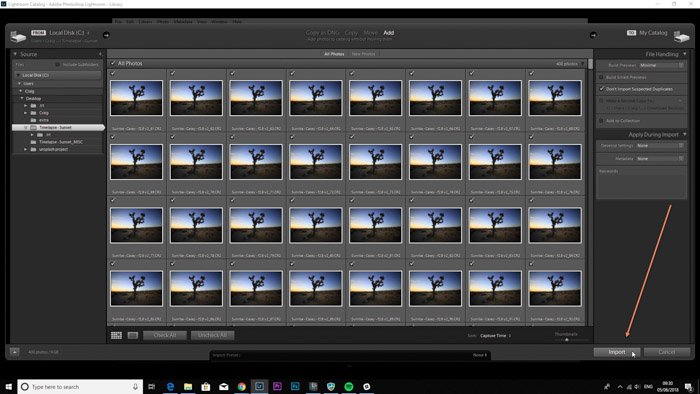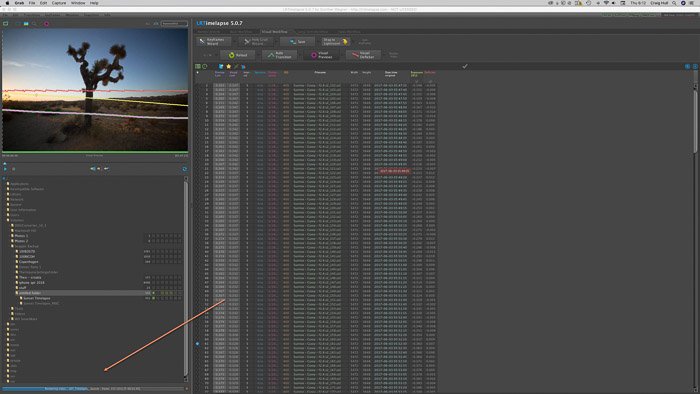

- Lrtimelapse lightroom cannot import how to#
- Lrtimelapse lightroom cannot import full#
- Lrtimelapse lightroom cannot import software#
- Lrtimelapse lightroom cannot import free#
Best Time-Lapse Video Post-Production Software in 2022 So in this article, we will take you through some of the best time-lapse video editing software you can find on the market in 2022. That is why you must utilize the time-lapse technique to depict the passage of time at a particular shooting location and create a sequence in your video that suggests that a certain amount of time has passed by.
Lrtimelapse lightroom cannot import full#
Consequently, an outdoor scene looks differently throughout different parts of the day, which makes it impossible to capture the full extent of its beauty by snapping a single photo or recording a short video of it. There are also a few hardware solutions, like Timelapse+ VIEW or Ramper PRO.All types of vistas change as time passes.

I haven’t used Sony for timelapse, so maybe you know something about that? Let me know in the comments 😉 I’ve heard that Sony cameras are so good in that, that the shot is usable straight out of the camera. Some people use semi-automatic modes, like aperture priority for that. On the LRTimelapse website there are specific tutorials for every workflow, so check it out if you want to start working inside that software.
Lrtimelapse lightroom cannot import how to#
However, maybe it sounds complicated, but once you learn how to do it and what is the metadata, you won’t have any problem with jumping back and forth bewteen LRTimelapse and Lightroom. Well, to be honest it’s longer than I thought. Read the metadata in Lightroom for all the pictures.Calculate the transition for the keyframes (also here you deflicker the shot).Edit keyframed pictures and save the metadata (it can be just for the pictures with keyframes – keyframes are shown in Lightroom as stars).Save the metadata (here’s how the software communicates with Lightroom – LRTimelapse saves the settings into.Add keyframes (pretty much like in After Effects – you set the value and it ramps smoothly between keyframes),.Import and initialize files into LRTimelapse,.There are generally a few steps for this: The workflow can be tricky, but there is a couple of nice tutorials from Gunther, you can find it here.
Lrtimelapse lightroom cannot import free#
There is a free version with a limitation of non-commercial usage and up to 400 pictures per shot, so definitely check it out! 😉 It’s a great piece of software from German timelapser Gunther Wenger, which allows you to create super smooth day to night transition, add keyframes and ramp the Lightroom settings within your shot and remove aperture flicker. It costs around 10$ and it’s a really nice app 😉 For details you can check their website: Day to Night Post Productionīasically there is one proper software that most of the timelapsers use: LRTimelapse. You can automate this process using the DSLR Dashboard app for IOS and Android, however it works ‘just’ with Nikon, Canon or Sony cameras. I wanted to keep the nice amount of motion blur – shorter shutter speed would make people blink in the frame, and longer would make them less visible 😉 I’ve got more jumps to compensate in post, however the difference is not that big, which is good for the result 🙂 In the city hall shot above I was trying to stay with the shutter speed around 1″, so I was changing mostly the aperture and a few times ISO. I’m trying to do the exposure jumps smaller than 1EV (1/3 or 2/3 EV). With a DSLR camera I use just a built in lightmeter. Personally, when I use my mirrorless GH4 I like to use zebra stripes for checking exposure. Other techniques are mentioned at the bottom of the article So, you’re watching the camera lightmeter, histogram or just a photo you have already taken and if it’s getting too dark (in case of day to night shot), you compensate this change with shutter speed, aperture or ISO. Basically, holy grail is a technique, in which you manually change the camera settings during the shot, then compansate the exposure jumps in post production. I call it a mini tutorial, because there are more techniques for day to night timelapses, here I will cover the one I use mostly. You can check out the details of the project or full list of the shots.

This is a shot from my 52 Timelapse Project. So, check out the shot below and then read my mini tutorial on holy grail technique. It was quite a pleasure to shoot, because together with my wife we found a beer garden next to the city hall, so I could sit next to the tripod and relax during the shot 😉 I ended up with this static, short day to night shot of the city hall. I had some plans for a few shots, however the weather made me change those plans. It lets you create smooth day to night (or night to day) transitions, so it’s perfect for shooting sunrises and sunsets. Holy grail is one of the basic techniques every timelapser should know.


 0 kommentar(er)
0 kommentar(er)
